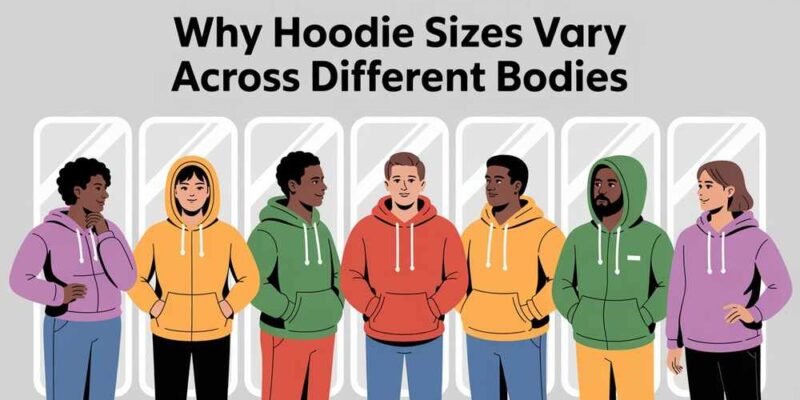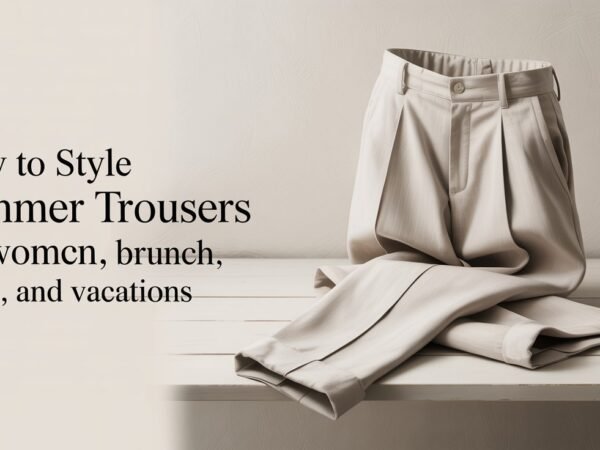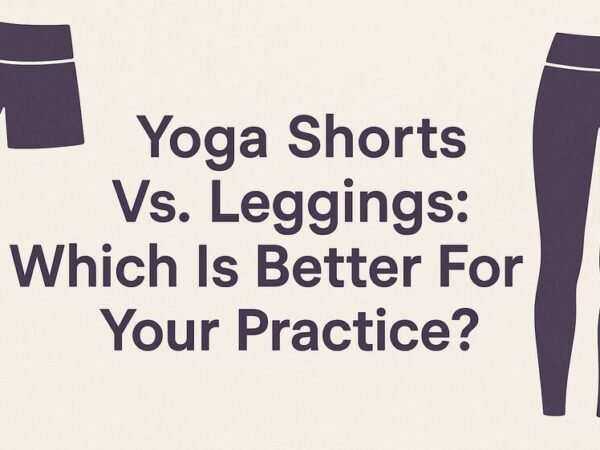Introduction
Finding the perfect hoodie can be challenging due to the many factors influencing sizing. From body shape and fabric type to brand differences and personal preferences, numerous elements affect how a hoodie fits. Choosing a hoodie isn’t just about picking a size—it involves understanding how different aspects influence comfort, style, and mobility. This article explores the key reasons hoodie sizes vary and offers insights to help individuals choose the best fit for their unique needs. Whether you’re shopping online or in-store, knowing these factors can improve your decision-making process.
Bodies Come in Many Shapes and Sizes
Bodies come in many shapes and sizes. Some have broad shoulders and narrow waists. Others have a rounder or slimmer build. Hoodies fit differently in each shape. A loose hoodie feels better for some. A fitted hoodie suits others more. Body shape affects how a hoodie looks. Trying different sizes helps find the best fit. Comfort depends on the right shape. Everyone has unique body proportions. Weight distribution and posture also impact how a hoodie sits on the body. Understanding one’s body type allows for smarter shopping choices and more satisfying results.
Fabric Type Changes the Fit
Hoodies come in different fabric materials. Cotton feels soft but may shrink. Polyester keeps its shape for longer. Blended fabrics offer a balanced stretch. Some materials feel thicker than others. Thicker fabrics make the essentials hoodie feel tighter. Thin materials give more flexibility. The right fabric affects overall comfort. A stretchy fabric adjusts to the body. Fabric choice impacts how a hoodie fits. Always check fabric details before buying. Certain fabrics breathe better than others, making them more suitable for various climates. Choosing a material that suits your lifestyle, whether for athletics or lounging, ensures long-term satisfaction.
Brand Sizing Is Not Always the Same
Each brand has different size charts. Some brands use more extensive measurements. Others make hoodies smaller in size. A medium in one brand may be significant in another. Checking size guides is very important. Trying different brands helps find the best fit. Online reviews help understand brand sizing. Customer feedback explains if sizes run small. Comparing size charts prevents sizing mistakes. Finding the right brand ensures better comfort. Furthermore, brands sometimes update their sizing over time, confusing even returning customers. Staying informed and up-to-date with brand-specific sizing info reduces the guesswork.
Hoodie Design Affects Sizing
Different designs have different fits. Oversized hoodies feel loose and comfortable. Slim-fit hoodies have a snug shape. Cropped hoodies sit higher on the waist. Zipped hoodies fit differently than pullovers. A kangaroo pocket may change fit. Hood size also affects how it feels. Extra-long hoodies give a relaxed look. Design elements change the overall sizing. Choosing the right design makes a difference. Some hoodies are tailored for aesthetics, while others prioritize warmth or utility. Considering both form and function helps narrow the ideal style and fit for the intended purpose.
Personal Preference Plays a Role
Some prefer tight hoodies for style. Others like loose ones for comfort. The hoodie size depends on how it feels. An essential hoodie with a relaxed fit allows easy movement. A snug fit looks more stylish. Personal taste changes hoodie choices. Trying different sizes finds the best feel. Comfort is different for each person. Always choose a proper fit—preference matters when selecting a hoodie size. Style trends, mood, and even cultural influences can affect what someone considers the ‘ideal’ fit. Honoring your comfort and taste is more important than following fashion norms.
Layering Changes Hoodie Fit
Hoodies feel different with layers. A hoodie over a T-shirt feels loose, while over a sweater, it may feel tight. Winter layering needs extra space inside. Some prefer roomy hoodies for layering. A slim hoodie works better alone, while thick layers need a bigger size. Consider layers when picking a hoodie. Trying hoodies with layers helps you decide. The right size depends on usage. If layering is essential in your wardrobe, consider buying hoodies sized explicitly for that purpose, considering fabric thickness and movement needs.
Stretch and Shrinkage Affect Fit
Some hoodies stretch after wearing them, while others shrink after washing once. Cotton hoodies may get smaller, while polyester ones usually stay the same. Blended fabrics may shrink less, while stretchy materials adapt to body size. Always read fabric care labels. Pre-shrunk fabrics reduce shrinkage issues. Sizing up helps prevent tight fits. Checking fabric behavior helps avoid surprises. Washing techniques also impact longevity and shape retention. Awareness of recommended wash cycles and drying conditions can prolong the hoodie’s original fit and feel.
Gender Differences in Hoodie Sizing
Men’s and women’s hoodies fit differently. Men’s hoodies have broader shoulders. Women’s hoodies have a more tapered fit. Unisex hoodies fit both body types. Some brands make gender-neutral essential hoodies in UK sizes. Women may size up for comfort. Men may size down for a slim fit. Checking size charts helps avoid mistakes. Trying both types can help decide. Gender-based sizing changes hoodie fit. Furthermore, even unisex sizing can lean slightly toward male or female cuts depending on the brand’s target market. Understanding these subtle differences can lead to better-fitting results.
Country Sizing Standards Differ
Different countries use different sizing charts. US sizes may feel more significant than Asian sizes. European sizes may be in between. Checking international size guides is essential. A medium in one country may be small in another. Always compare with local sizing. Online size converters help in choosing. Reading reviews from buyers is useful. Country-based differences affect hoodie sizes. Trying different sizes avoids wrong purchases. International brands may also interpret sizes differently based on regional preferences, so reading customer reviews from your region is especially helpful when ordering globally.
Choosing the Right Fit Matters
Finding the right hoodie size is essential. It affects comfort and overall style. A well-fitted essentials hoodie boosts confidence. Too tight may feel uncomfortable. Too loose may not look good. Checking measurements helps choose the right one, and trying hoodies before buying helps. Size charts provide helpful guidance. The right hoodie size improves comfort. Always pick a hoodie that feels good. Ultimately, the best hoodie balances fit, feel, and function. By taking a little extra time to research and try on options, you’re more likely to find a hoodie you’ll wear often and love for years.
Conclusion
Understanding the factors influencing hoodie sizing can make shopping more effective and enjoyable. Individuals can make more informed choices by considering body type, fabric, brand, design, and personal preference. Whether shopping locally or internationally, reviewing sizing guides and trying on different styles leads to greater comfort and satisfaction with every hoodie purchase. Making thoughtful decisions also reduces the likelihood of returns or disappointments, saving time and effort. A hoodie is more than just clothing—it reflects style, comfort, and personality. Choose wisely, and you’ll get both fashion and function in one.













